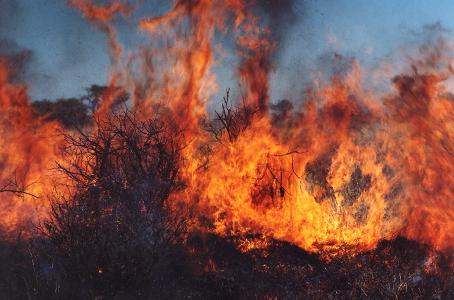Catherine Parr
This new project aims to improve biodiversity conservation in southern Africa’s savannas through a multi-faceted programme of fire research, capacity building and effective fire management.

Fire is critical for healthy ecosystem functioning in savannas, and is widely used as a tool in conservation management. This new project brings together biodiversity research with capacity building and external communication to promote effective fire and conservation management in South African savannas. The project has four main objectives which are to:
(1) improve scientific understanding of fire effects on faunal biodiversity to provide a sound basis for conservation management;
(2) provide baseline inventory information for a range of taxa (invertebrates and birds);
(3) build capacity in southern African conservation organisations;
(4) educate and increase public awareness about the role of fire in savanna conservation.
Ecological research for this project involves studying invertebrate (spider and termite) and bird fauna responses to fire, as well investigation of fire management strategies for patch-burning. Fire strategies that introduce increased fire variability into the landscape through the use of dynamic spatial and temporal mosaics (patch burning) are increasingly being promoted and implemented in conservation areas. A key assumption is that spatial and temporal fire patterns are surrogates for biodiversity. However, if savanna biota are resistant to burning, the pyrodiversity paradigm warrants critical investigation. A key issue is determining the degree of pyrodiversity required for effective biodiversity conservation. This objective builds on the first part of project taking a more management-orientated focus.
The capacity building component (specifically the training of conservation managers and students) of this project aims to ensure that knowledge and a range of skills are developed within conservation organisations and research institutes. While finally because of the influence of public perceptions on conservation management policies, it is vital that the general public are informed about the effects of fire on biodiversity and fire management practices. Raised awareness will be achieved through a multi-level communications and outreach programme.
Fieldwork will be conducted at a range of sites in Kruger National Park and in Hluhluwe-iMfolozi Park, and is scheduled to commence in February 2008.